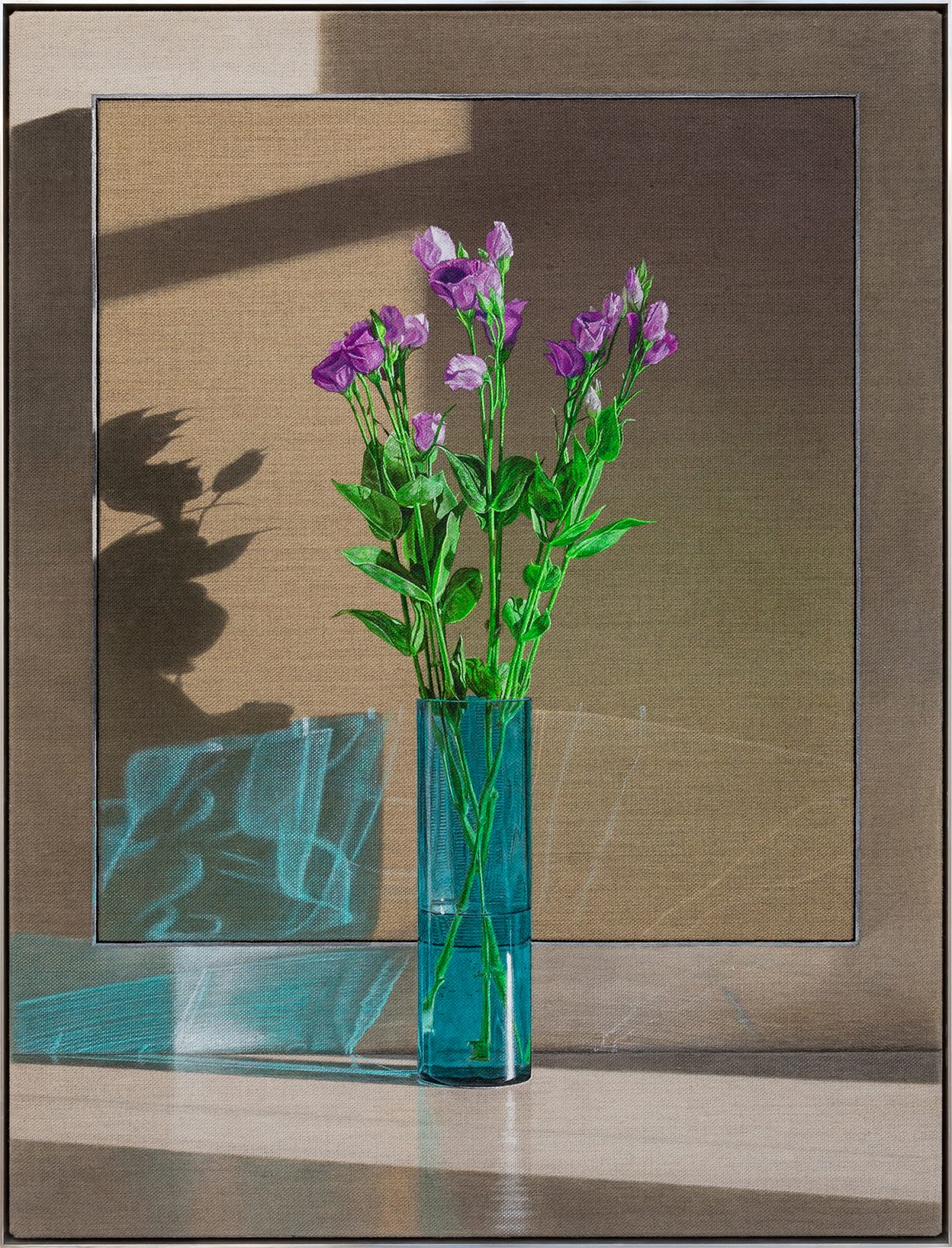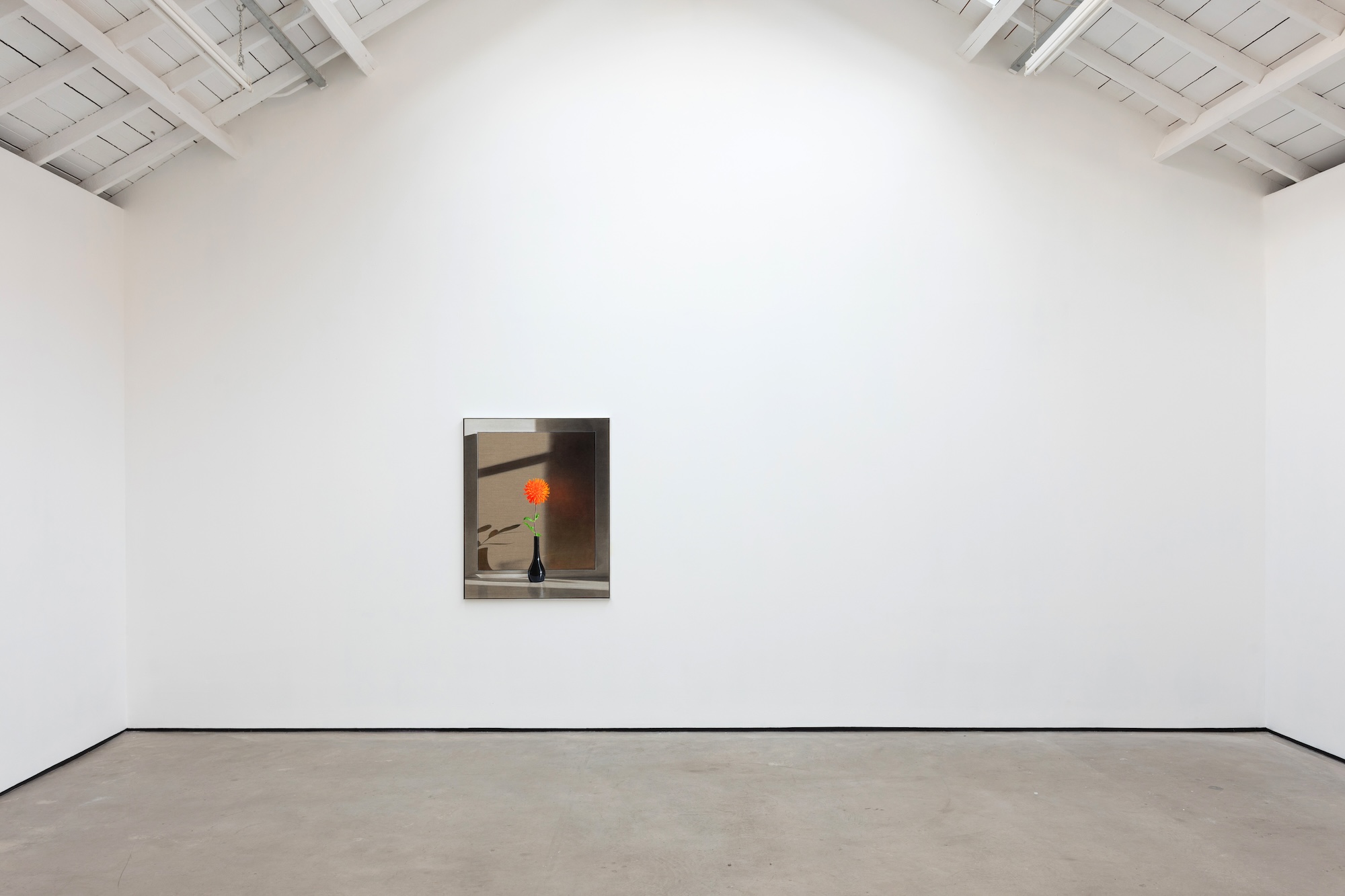The artist’s take on the traditional Flemish genre paints an eerie portrait of contemporary domestic space
In the liner notes to his album Ambient 1: Music for Airports (1978), Brian Eno proposed a low-key manifesto for a new kind of environmental music. The primary maxim of ambient music, as outlined in this inaugural proclamation, was that ‘it must be as ignorable as it is interesting’ – a tricky tightrope to tread, but one that aptly captures the carefully balanced blandness of Michael Wilkinson’s latest exhibition.
Eerily sparse, Still Life with Blank Canvas consists of four photorealistic paintings, each depicting a vase of flowers set on a slightly reflective counter before a blank linen canvas couched in a thin aluminium frame. Carried out on canvases identical to those contained within the compositions, Wilkinson has left patches of untouched linen where the real material would overlap with its painted representation. This claustrophobic mise en abyme short-circuits any sense of depth, giving off the effect that the flowers are pressed in place between the pictorial plane and its material base.

Wilkinson’s handling of light is exquisite and mechanically precise. Painted in fluorescent pigments, the flowers radiate against the dull tones of the backdrop, even as the vivid acrylics sink into the thick weave of unprimed linen. In Dahlia (2024) a green and purple stem rises from a bud vase, exploding in a fiery sunburst at the centre of the canvas. A subtle dusting of orange suggests at the colour bouncing o the petals onto the shaded surface behind. The vaporous light refracting through the turquoise glass vase in Lisianthus (2025) twists and curls like coloured smoke.
Although clearly in conversation with the mischievous traditions of seventeenth-century Flemish trompe l’oeil, these recursive works are emptied of any sense of play, lacking even the melancholic lusciousness of much still life from the same period. Nominally domestic, intimacy is conspicuously absent, as is any inkling of the heady sensuousness we might expect from the genre. Instead we are met with the antiseptic emptiness of the hotel lobby, the luxury showroom, the curated austerity of agency-managed Airbnbs. The visual trickery accounts for a large part of their uncanny energy, but the frictionless, aspirational minimalism of the interiors is what makes the compositions truly unheimlich: unhomely. By excavating their own hollowness, these paintings pull no punches about their status as objects of commerce, redoubling their function as innocuous decor to the point of collapse.
In previous shows, Wilkinson has often made overt references to politics, popular uprisings and alternative music, none of which are gestured towards here. I found myself thinking back to his 2018 series of found photographs of political graffiti from May 1968, carefully edited with gouache and pencil to erase any trace of the painted slogans. Embracing a similar impulse to return to the blank surface, cleared of content but ready to be defaced again, these altered images were carefully poised between potential and forgetting. The blankness in these new paintings, which is concretised in the raw linen and bolstered by the allusions to inane contemporary design, suggests a stagnant placidity: an illusion of idyllic domesticity that is predestined to be refused.
Still Life with Blank Canvas at The Modern Institute, Glasgow, 24 January – 5 March
From the April 2025 issue of ArtReview – get your copy.
